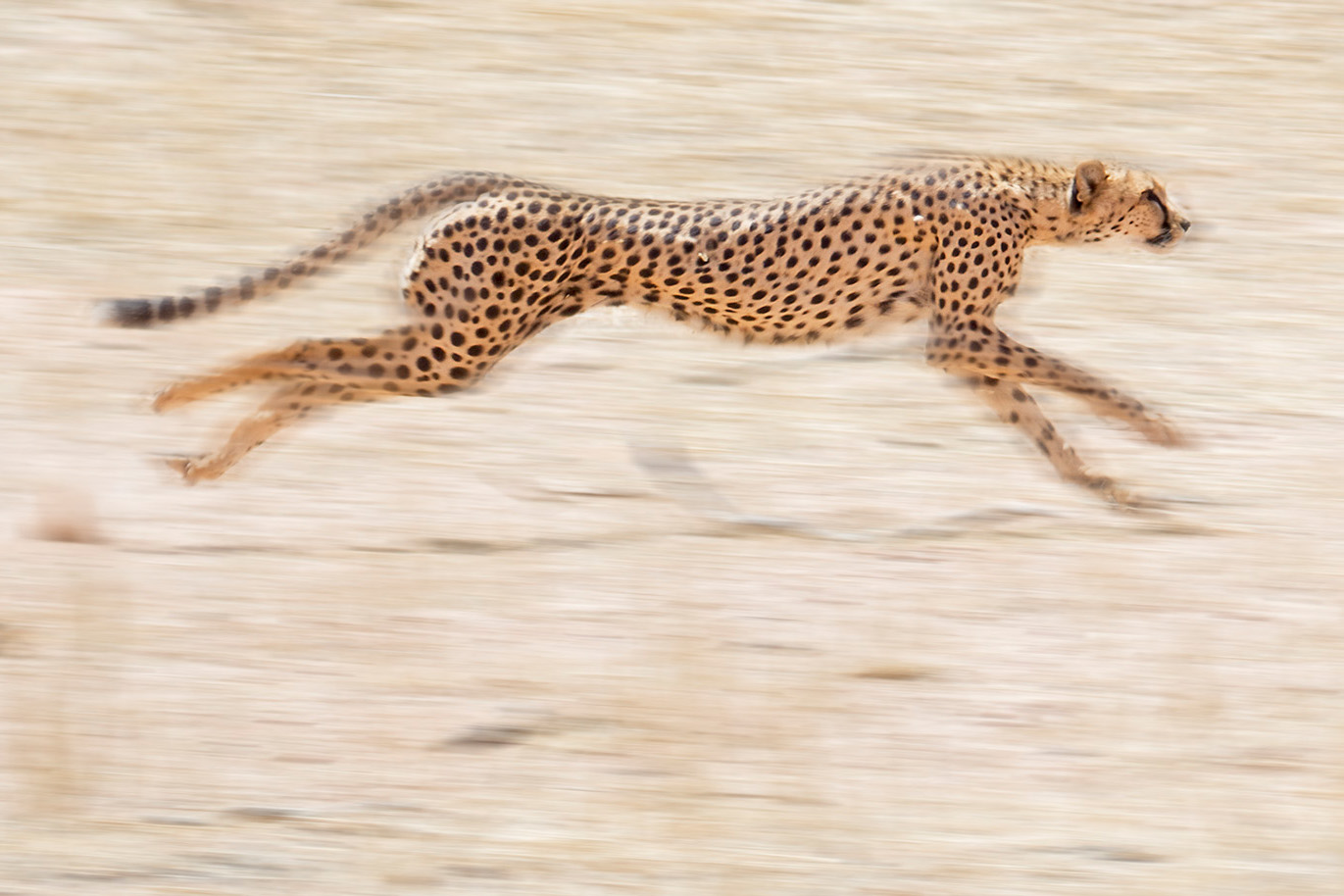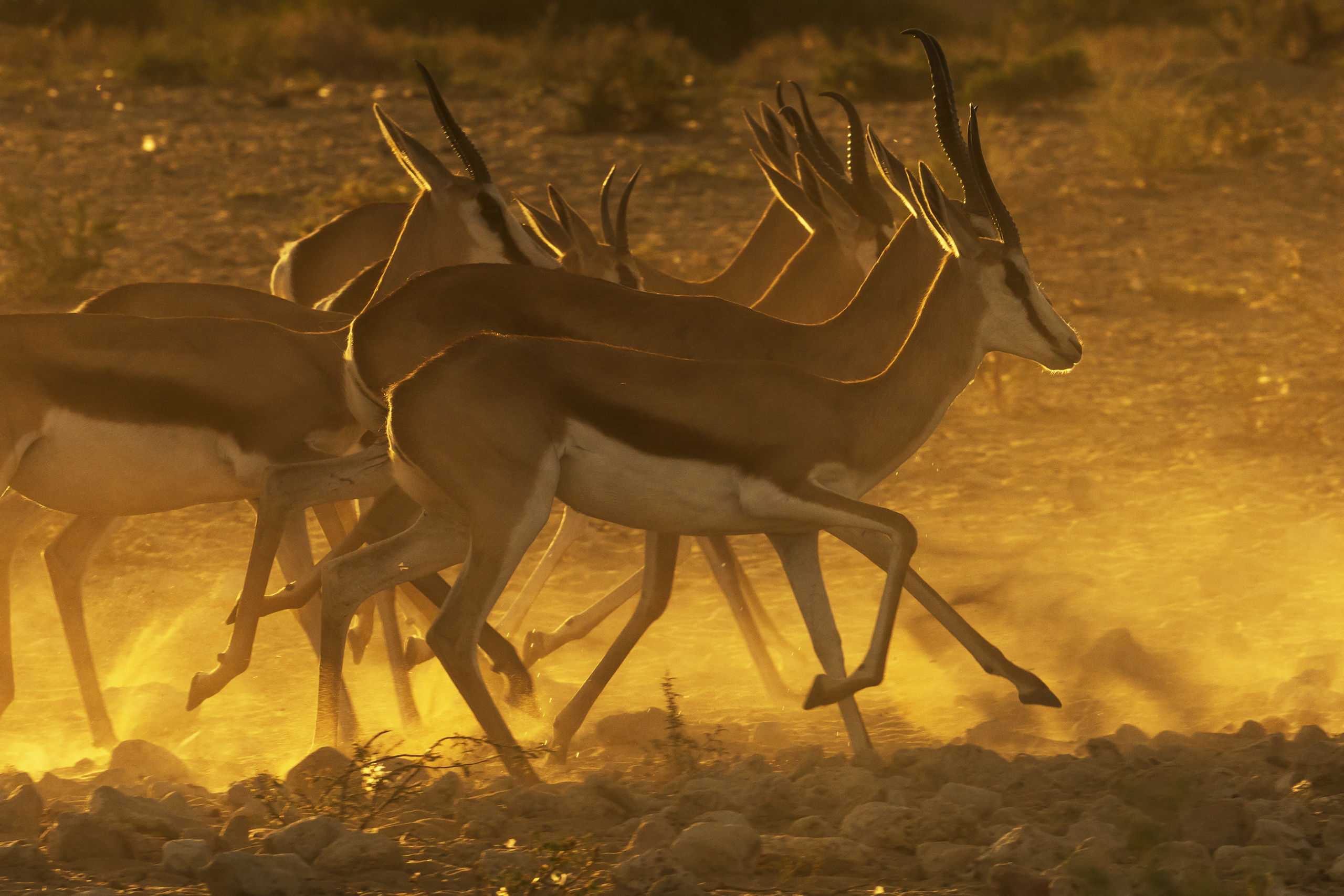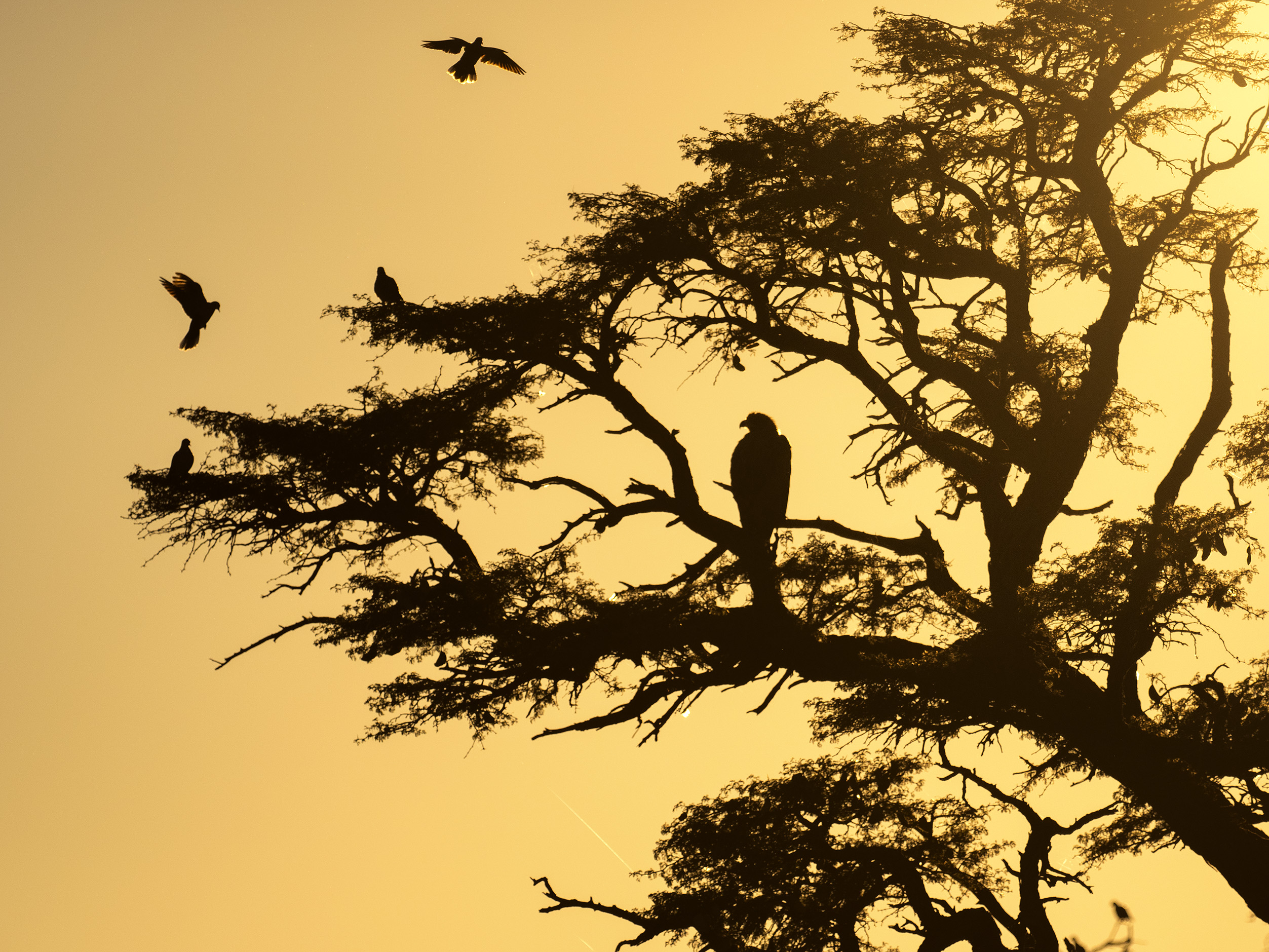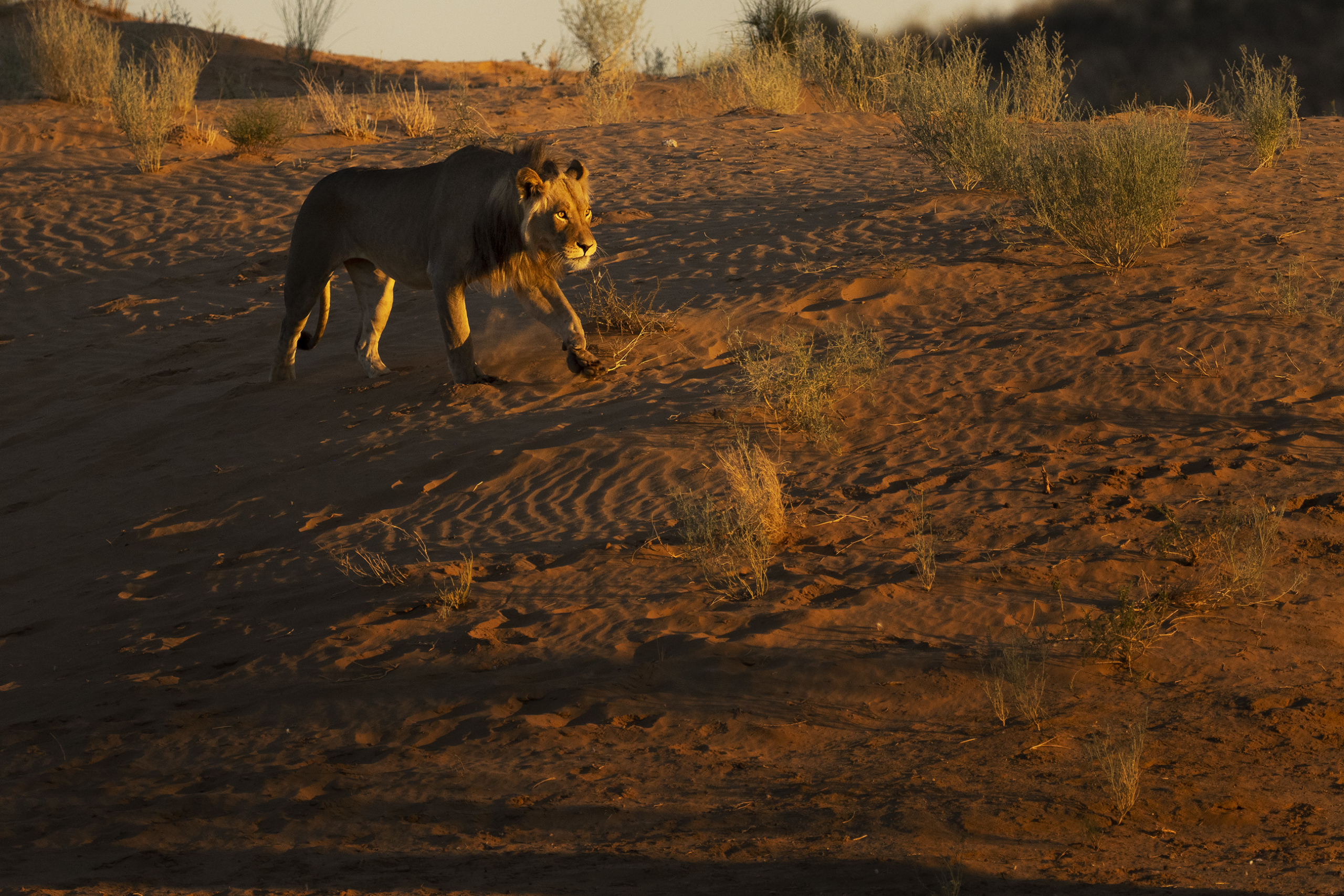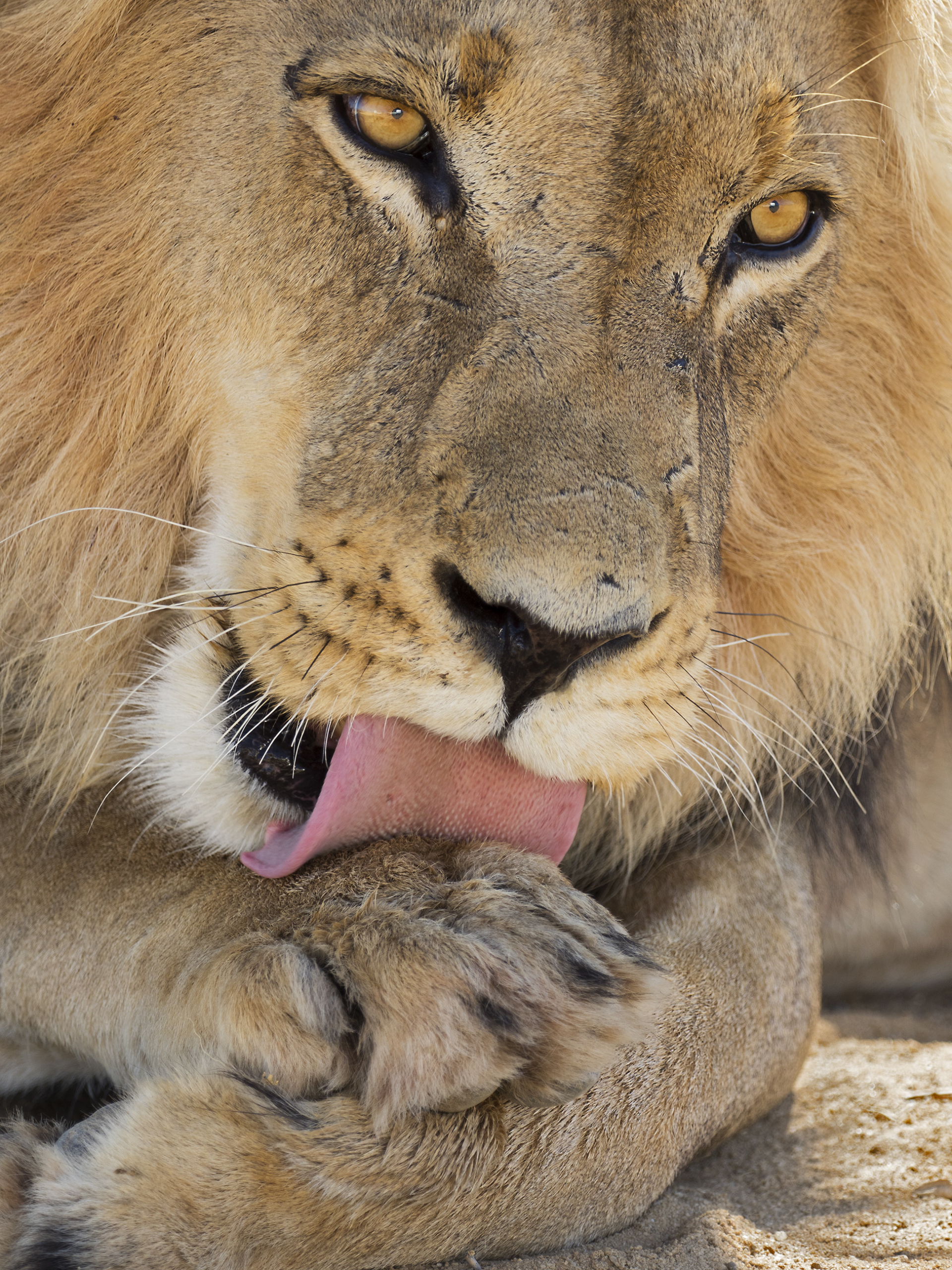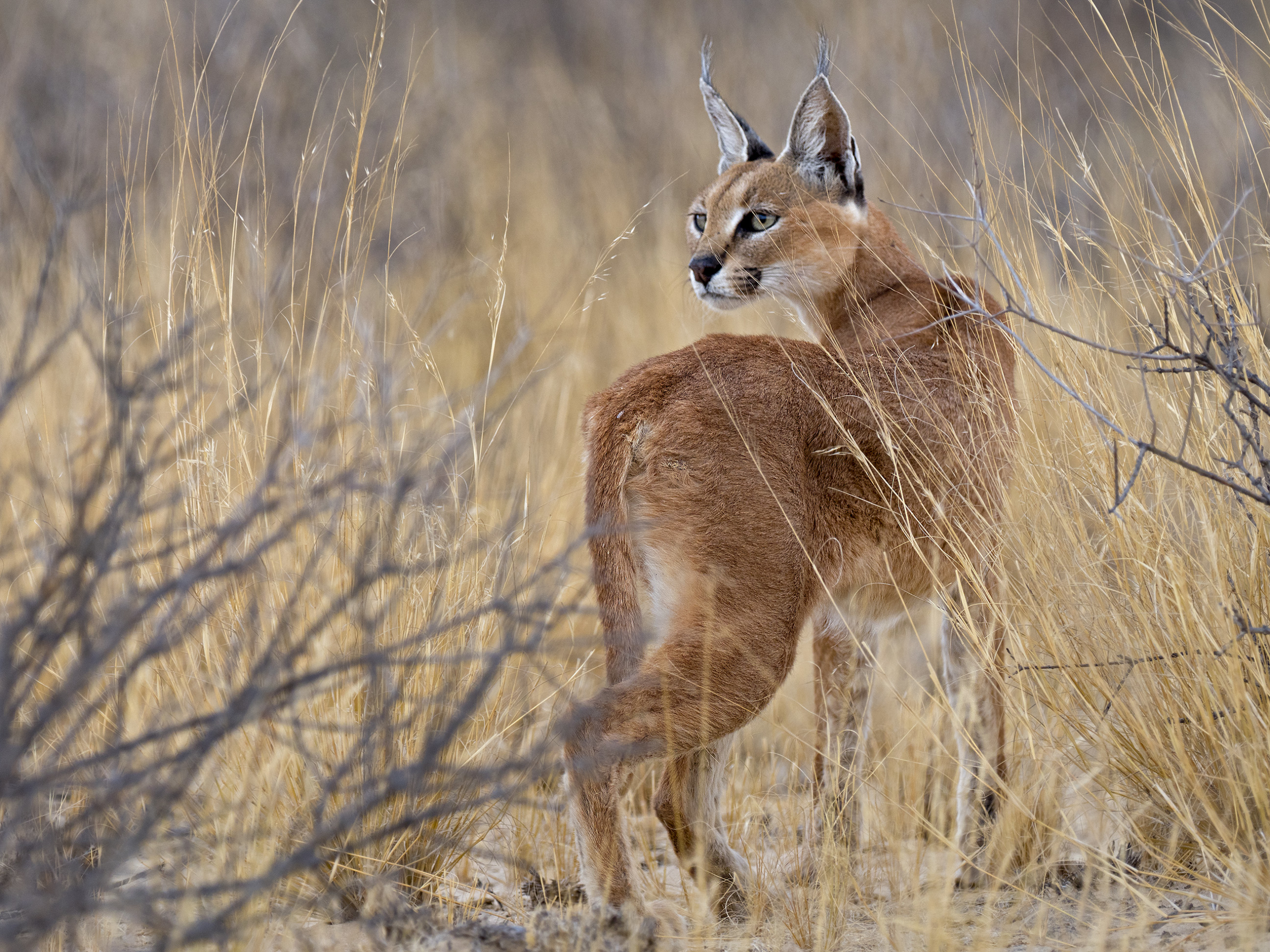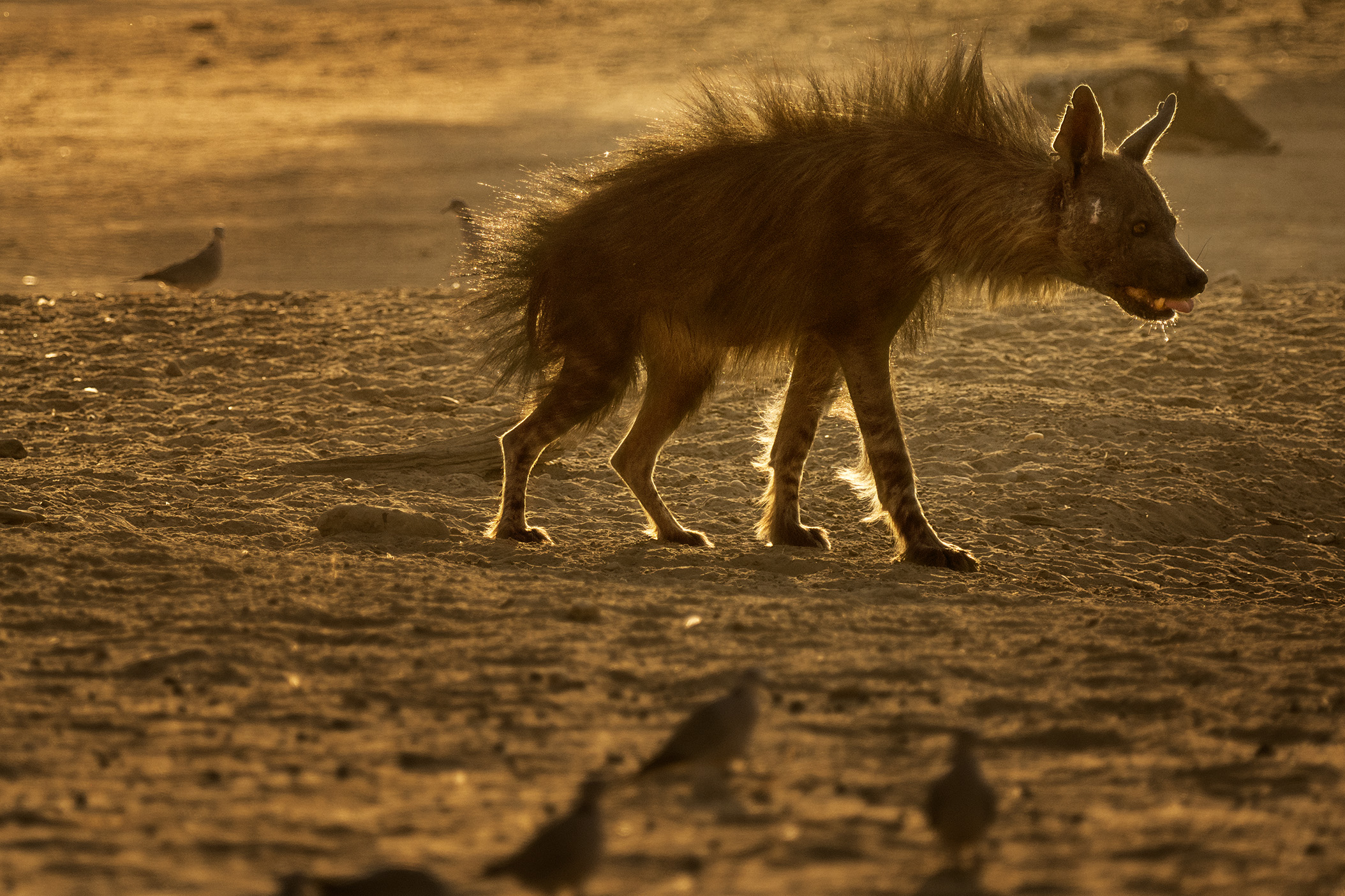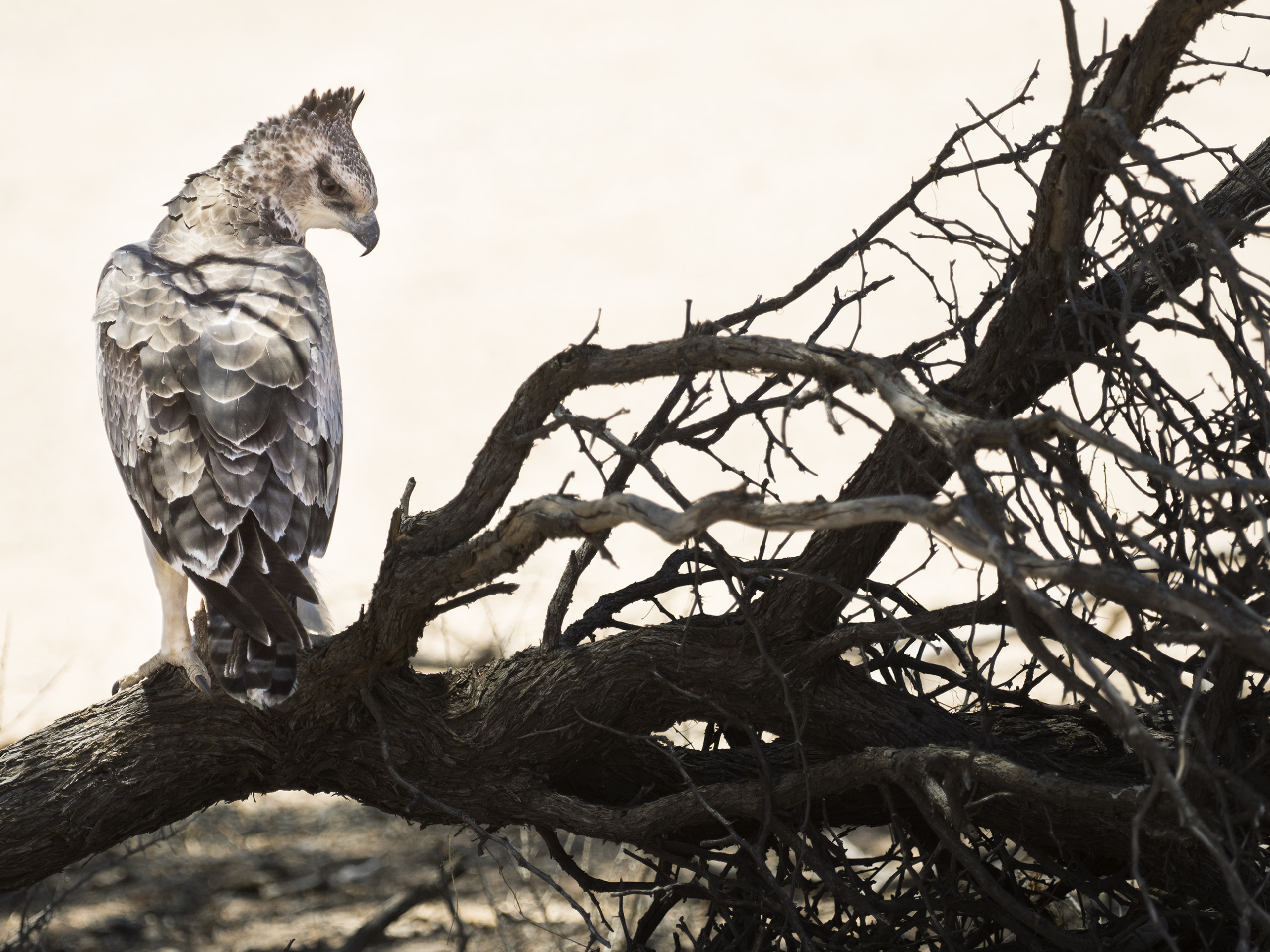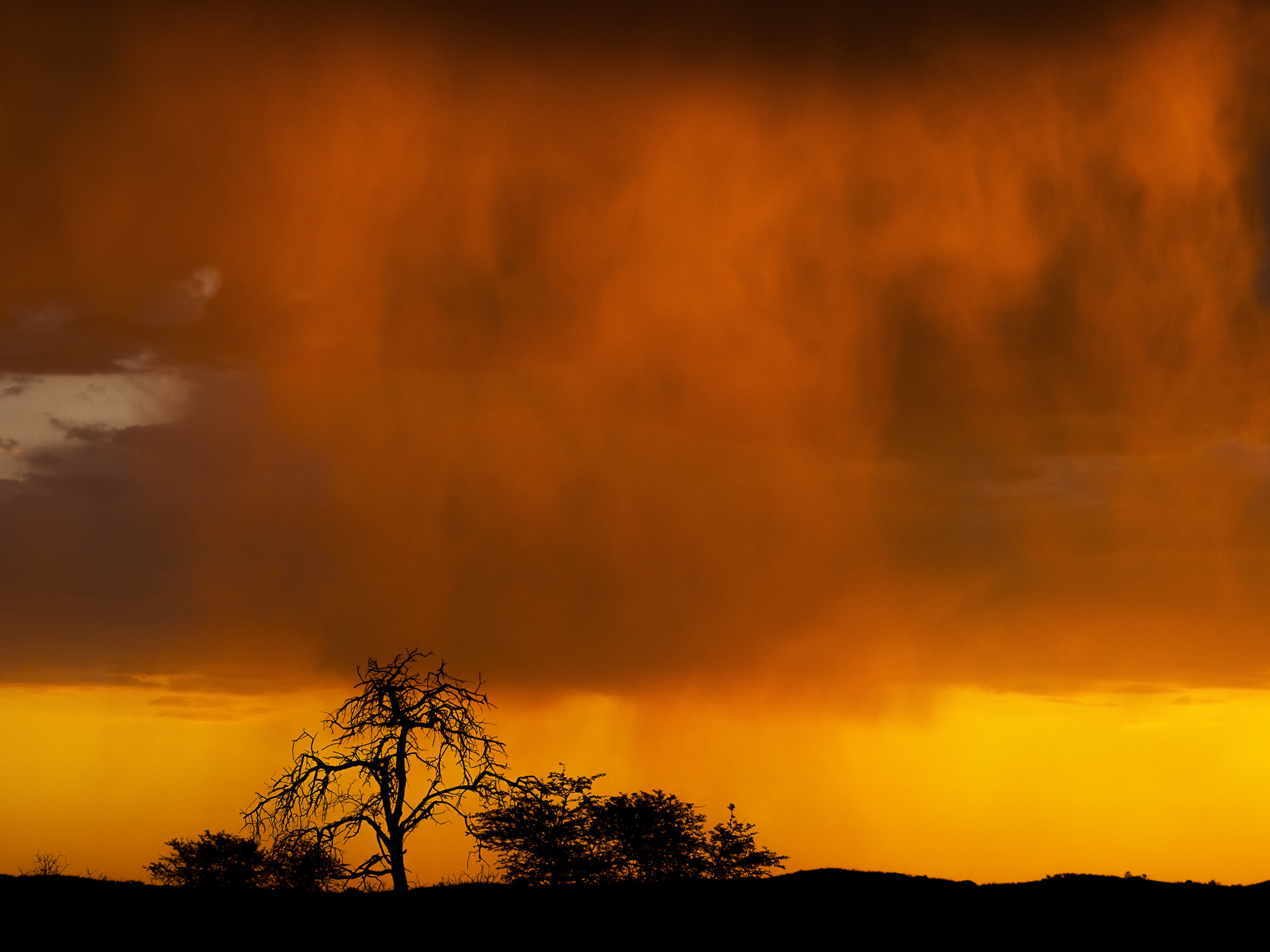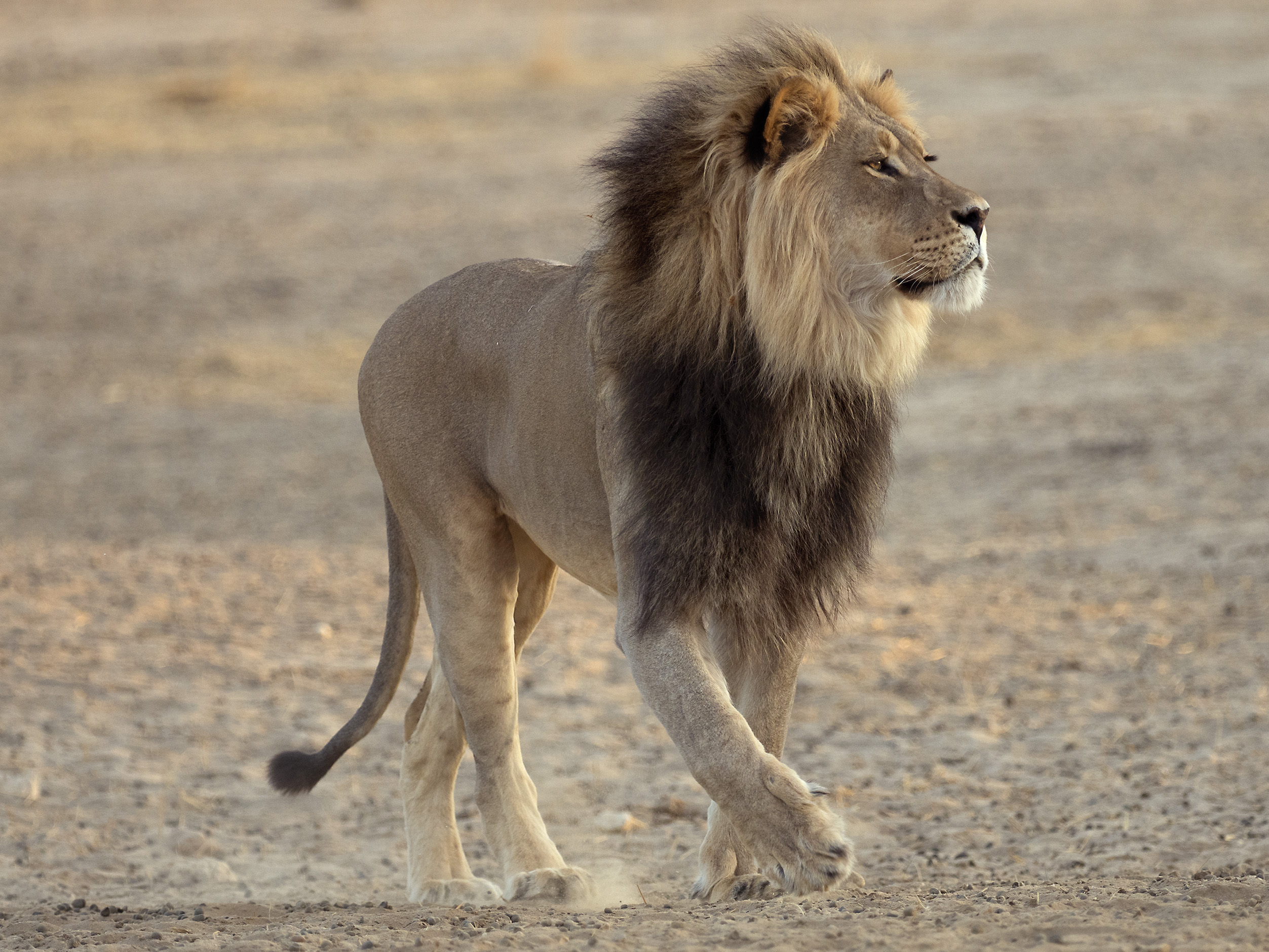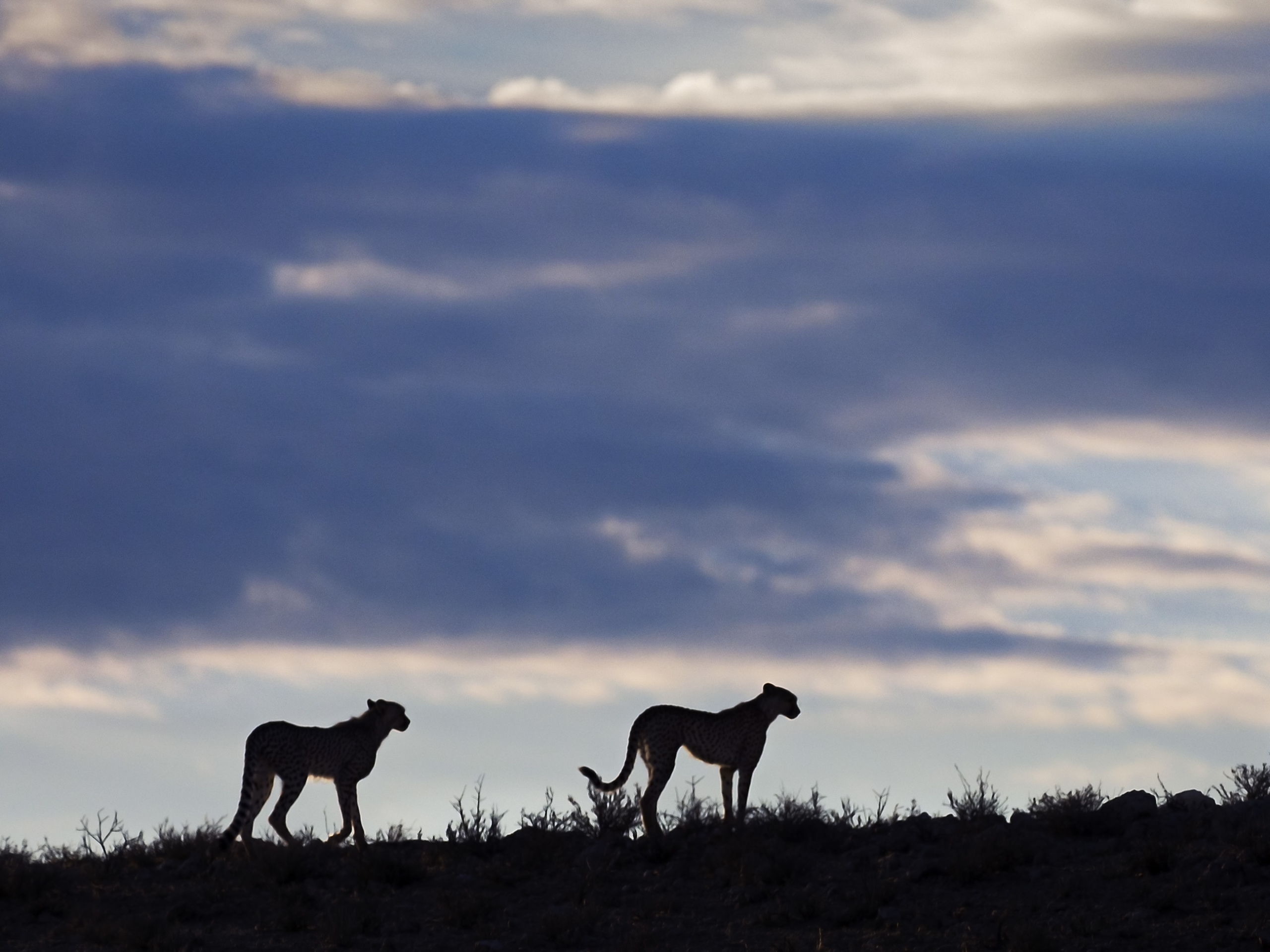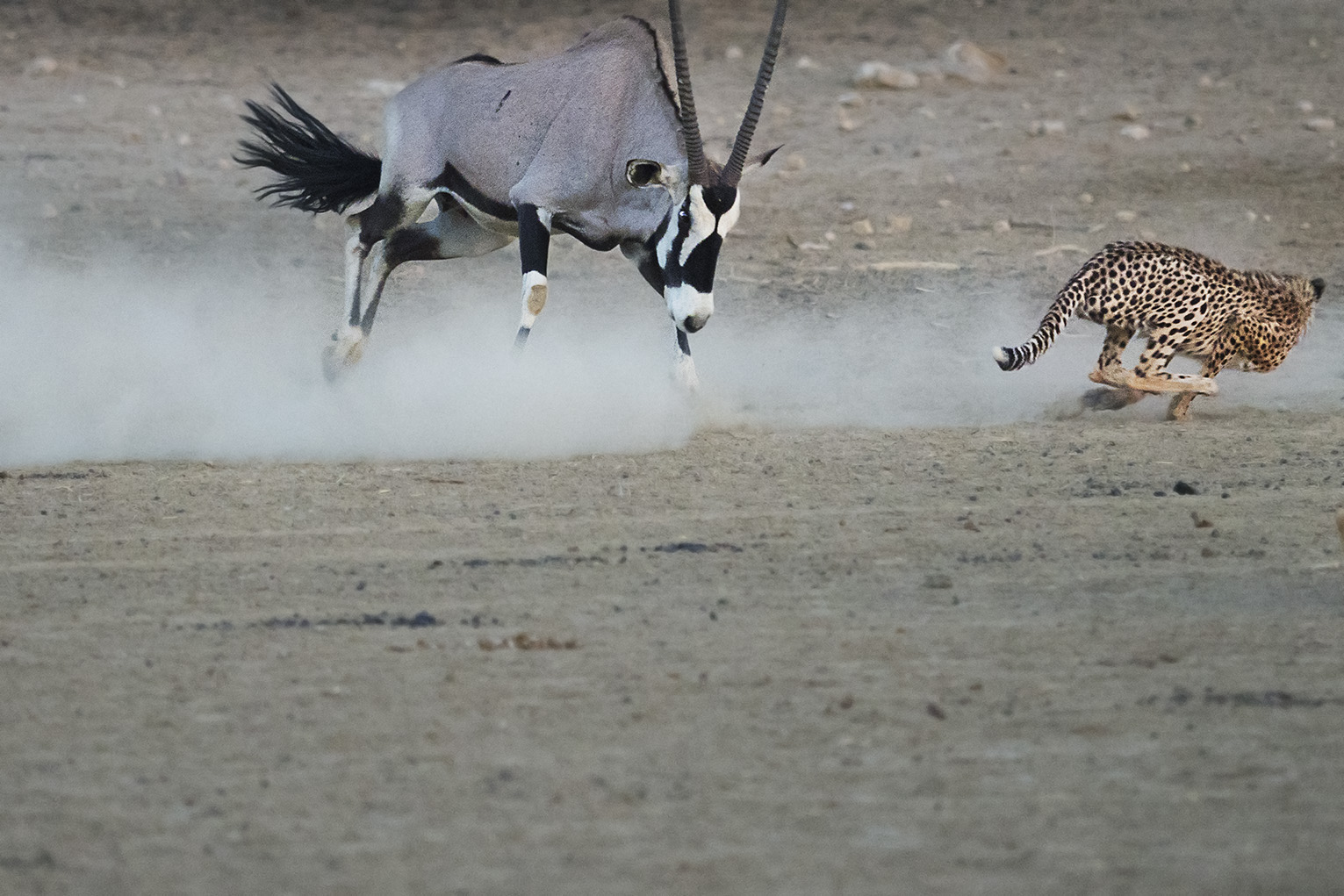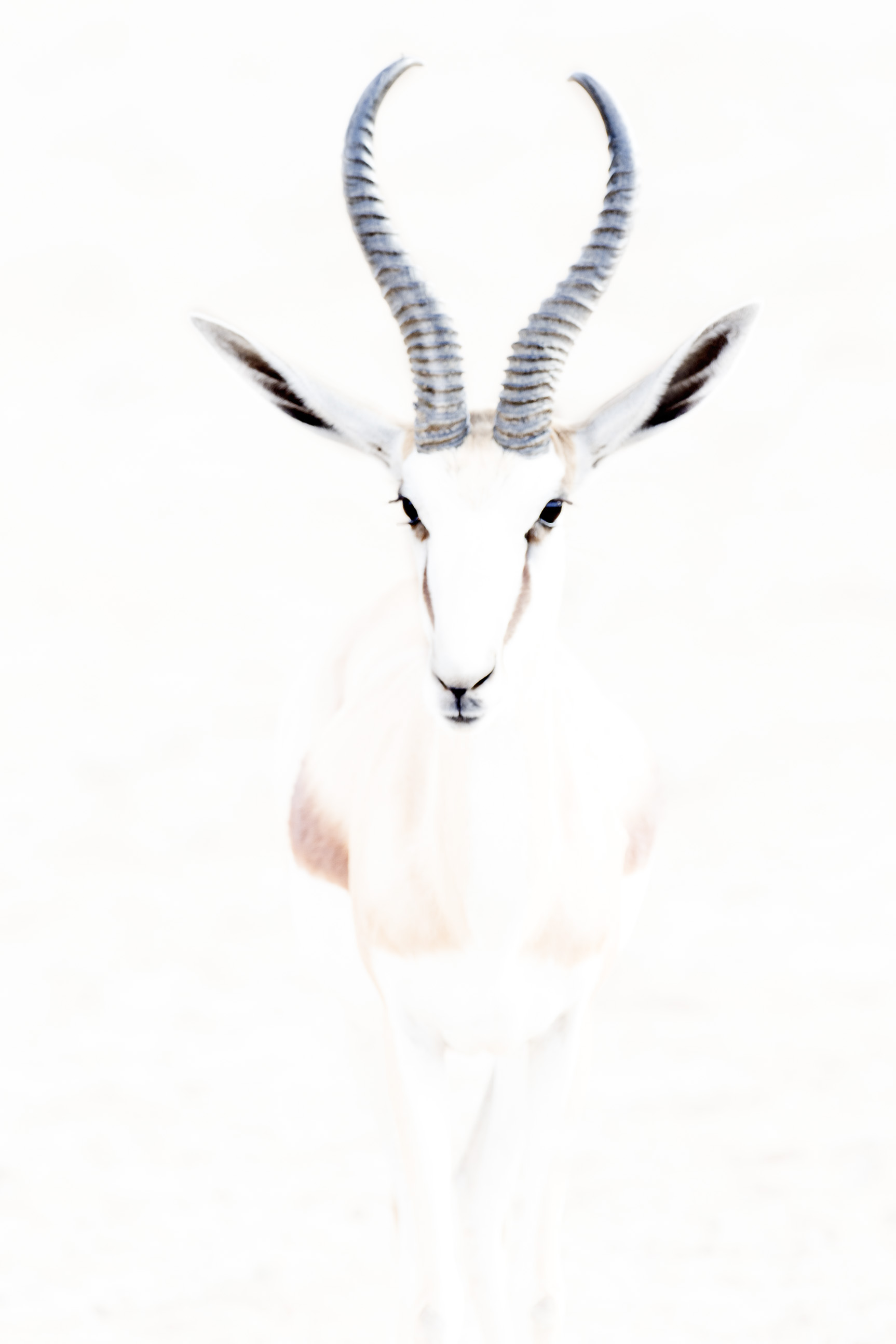Some highlights
- One of Africas’ finest National Parks, many big cats in desert environments
- Lions among sand dunes
- The most wildlife-rich part of the Kalahari desert
- Good chances to photograph Caracal, Cheetah and African Wild cat
- Oryx in fantastic environment
- The best area to see and photograph the rare Brown Hyena
- Wildlife concentrated around action-filled water-holes
- Abundant birdlife, with many birds of prey
- Night photography of the star-lit desert sky
- Plenty of time for photography and many game-drives** at every site
- Tour leaders that give you lots of creative photo ideas
- The tour leader will show you their best spots and provide photographic advice to a small group that share the same interests
- We contribute to ”Project Wild Dog”
KGALAGADI TRANSFRONTIER NATIONAL PARK
Kgalagadi Transfrontier Park is one of the wildest most wildlife-rich wilderness areas on the planet. The National Park is larger than many countries and is situated in both South Africa and Botswana. Several different desert ecosystems host a rich wildlife with desert Lions among sand dunes, Cheetahs and Leopards hunting Oryx and other antelopes. The birdlife is varied, with Africas’ largest and smallest raptors. The area attracts professional wildlife photographers time and time again because of it’s beautiful settings, the many animals and amazing desert light.
WILDLIFE IN KGALAGADI
The landscape is dominated by red and yellow sand dunes, saline lakes, steppe and forest savannah. The wildlife is incredibly rich with large abundance of species like Springbok, Oryx, Ostrich, Gnu, Giraffe and Hartebeest. There are also plenty of smaller animals, such as Jackals, African Wildcats, Honey Badgers, Meerkats, Desert Foxes, Mongooses as well as the speciality – the whistling Gerbil. However, it is big cats and the chance to see them in action that has given the park its cult status amongst wildlife photographers. Africas large black-maned Lions, Cheetahs, Leopards, Caracals, Spotted and Brown Hyenas all hunt in the National Park, and the chances of exciting photography is good.
The birdlife is unique, with the largest eagle – the Martial Eagle, and the smallest bird of prey in Africa – the Pygmy Falcon. The Lanner Falcon is common, as are various Weever Birds, Bulbuls, Doves, Bustards, Sandgrouse, owls, finches and a large number of birds of prey.
During the tour we will stay at several interesting lodges and ”rest-camps” where you can explore on your own, photographing smaller animals. Some even have their own small hides, where you can see predators up close.
Itinerary
Travel day (26/11)
Flight to Upington, South Africa.
Arrival at Upington International Airport. Wild Nature Photo Adventures tour leader will meet you at the airport for transfer to the lodge in Upington for dinner and an introduction to the tour.
Day 2 (28/11) (Breakfast – Lunch/lunch parcel – Dinner)
After an early breakfast we drive 290 km to Kgalagadi Transfrontier National Park. Once inside we go on our first game-drive ont he way to our first lodge, which is in Botswana. We will pas the invisible border many times and will spend three nights at this lodge.
During these days we will rise before dawn in order to be at the water-holes when the light appears. We photograph here and along the roadsides until the heat arrives and the light gets too harsh. Then we eat breakfast, rest, have lunch and workshop at the lodge before we head out again in the afternoon until it gets dark. Then we have dinner and do night photography by the lodges own water-hole.
After an early morning game-drive and breakfast we leave the lodge and head north towards the central parts of the park. We check-in at a rest-camp where we spend two nights. We will go on an afternoon game-drive until the sun sets.
We rise before the sun does in order to get to the water-hole before the light arrives. We photograph here and along the roadsides until the heat and light get too strong. Then we have breakfast, rest, lunch and a workshop at the rest-camp before we head out again in the afternoon until dark. Then there will be dinner and night photography at the rest-camps own water-hole.
After an early morning game-drive and breakfast we leave the rest-camp and head for the northern parts of the park. We check-in at a lodge where we spend three nights. We will go on an afternoon game-drive until the sun sets.
During these days we are up before sunrise in order to be at the water-holes before the light arrives. We photograph here and along the roadsides until the heat and light get too strong. Then we have breakfast, rest, lunch and a workshop at the rest-camp before we head out again in the afternoon until dark. Then there will be dinner and night photography at the lodges own water-hole.
After an early morning game-drive and breakfast we leave the lodge and head south towards the southernmost parts of the park. We check-in at the largest rest-camp where we spend one night. Farewell dinner in the evening.
Day 11 (7/12) (Breakfast)
After an early breakfast we head 290 km to Upington Airport and the flight home to Scandinavia.
Error: Contact form not found.


